Why Your Laptop Won’t Connect to WiFi

Nothing’s more frustrating than your laptop deciding it no longer wants to connect to WiFi—especially when you're on a deadline, in the middle of a binge-watch, or trying to submit that last-minute work email. If your laptop suddenly refuses to connect to your wireless network, you're not alone—and yes, there are ways to fix it fast.
In this guide, we’ll break down the most common reasons for WiFi connection problems, how to diagnose them, and how to get back online quickly. This blog follows Google’s E-E-A-T guidelines by drawing from real user experience, expert advice, and actionable solutions.
Understanding the Basics of WiFi Connectivity
Before diving into troubleshooting, let’s get clear on what WiFi really is. Many people confuse DSL, cable, and WiFi, but they’re not all the same thing. If you’re unsure about the technical differences, you might want to check out this guide on the difference between DSL and WiFi.
WiFi is simply the wireless way your laptop connects to your modem or router, which connects to the internet. So, if WiFi isn’t working, the problem could be anywhere in that chain—from your laptop’s settings to your router or even your ISP.
Common Reasons Why Your Laptop Won’t Connect to WiFi
1. WiFi is Turned Off on Your Laptop
It sounds silly, but it’s more common than you think. Many laptops have a physical switch or a function key (like F2 or F12) to enable/disable WiFi.
Fix:
Double-check if your WiFi is turned on. On Windows, go to Settings > Network & Internet > WiFi and ensure it’s enabled.
2. Airplane Mode is Enabled
When airplane mode is on, all wireless communications, including WiFi, are disabled.
Fix:
On Windows, click on the network icon in the system tray and ensure airplane mode is turned off.
3. Outdated or Corrupt Network Drivers
Outdated drivers can stop your laptop from detecting available networks or connecting to them properly.
Fix:
Go to Device Manager > Network Adapters, right-click your wireless adapter, and select Update Driver.
4. Wrong Network Password
Entered your WiFi password recently? Double-check it—one wrong character can prevent a connection.
Fix:
Forget the network and reconnect using the correct credentials.
5. Router or Modem Issues
Sometimes the issue isn’t your laptop—it’s your home WiFi setup. If other devices can’t connect either, the problem is likely with your router.
Fix:
Unplug your router and modem, wait 30 seconds, then plug them back in. If you're unsure about setup, here’s a helpful guide on how to set up a WiFi network in your home.
Advanced Troubleshooting Tips
1. Reset TCP/IP Stack
Fix:
Open Command Prompt as an administrator and type the following:
netsh int ip reset
Then restart your laptop.
2. Run Network Troubleshooter (Windows)
Fix:
Go to Settings > Update & Security > Troubleshoot > Internet Connections, then follow the prompts.
3. Check for IP Conflicts
If multiple devices are using the same IP address, it can knock one offline.
Fix:
Open Command Prompt and type:
ipconfig /release
ipconfig /renew
4. Disable Firewall or Antivirus Temporarily
Some firewalls or antivirus programs may block WiFi access.
Fix:
Disable them temporarily to test if they’re the cause—but remember to turn them back on afterward!
Is Your Router's WiFi Outdated?
WiFi technology is evolving fast. If you’re using an older router that doesn’t support newer standards, that might explain your connectivity issues. Consider upgrading to a router that supports Wi-Fi 6, the latest and fastest protocol. Learn more about the future of Wi-Fi and Wi-Fi 6 here.
Are You Too Far from the Router?
Try a WiFi Extender or Mesh Network
If your laptop connects in one room but not in another, distance or obstructions might be the problem.
Fix:
Invest in a WiFi extender or mesh WiFi system to improve coverage throughout your home. Check out this guide on WiFi extenders and mesh networks.
When All Else Fails: Reset Your Network Settings
Resetting your entire network configuration can fix stubborn issues, but it also erases saved networks and passwords.
Fix:
On Windows, go to Settings > Network & Internet > Status > Network Reset and restart your laptop.
When to Call Tech Support or Your ISP
If you’ve tried everything and your laptop still won’t connect, the issue may be with your internet service provider (ISP). Call them to rule out outages or hardware failures. You may also want to explore more reliable or faster ISPs, especially if you’re frequently facing these issues.
Conclusion
WiFi connectivity issues can feel like a nightmare, especially when you’re trying to stay productive or entertained. But as you can see, most of the common problems have quick fixes—ranging from checking your network settings to updating drivers or using a mesh system for better coverage.
Make sure you understand how your WiFi works, keep your drivers and equipment up to date, and always have a backup plan (like mobile data or a hotspot) just in case. And if you’re still using an outdated setup, now might be a great time to upgrade your WiFi gear for a smoother, more reliable connection.
Related Posts
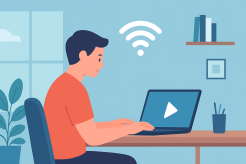
Fri, Nov 28, 2025 11:17 PM
cheap internet dealsThe Ultimate Guide to Internet Bandwidth
Learn how internet bandwidth works, how to optimize upload and download speeds, and get fast, reliable performance for your home network.
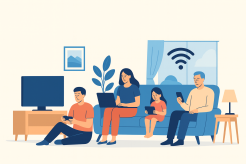
Fri, Nov 28, 2025 10:36 PM
cheap internet plansHow to Choose the Best Internet Plan Based on Your Household Size
Learn how to choose the best internet plan for your household size. Match speeds, connection types, and costs to your devices and daily usage for reliable home Wi-Fi.
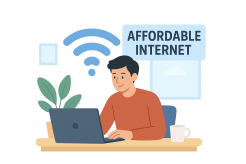
Thu, Nov 27, 2025 1:22 AM
cheap internet offersInternet Subsidies: What They Cover and How to Benefit
Learn how to qualify for federal, state, and non-profit discounts and find the right cheap internet plan for your home.
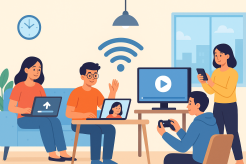
Wed, Nov 26, 2025 4:22 AM
Internet BundlesWhy Upload Speed Matters: Choosing the Right Internet Plan
Discover why upload speed is just as important as download speed. Learn how to pick the right internet plan for streaming, video calls, and online gaming.
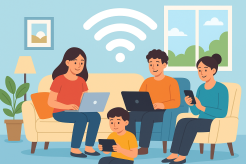
Wed, Nov 26, 2025 2:37 AM
Internet BundlesAffordable Internet Plans: Your Complete FAQ Guide
Discover affordable internet plans for students, low-income households, and families. Learn tips to save, available providers, and assistance programs like Lifeline.